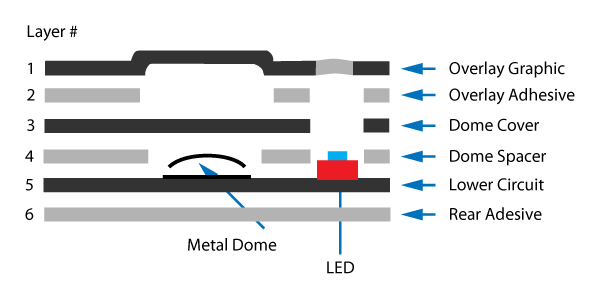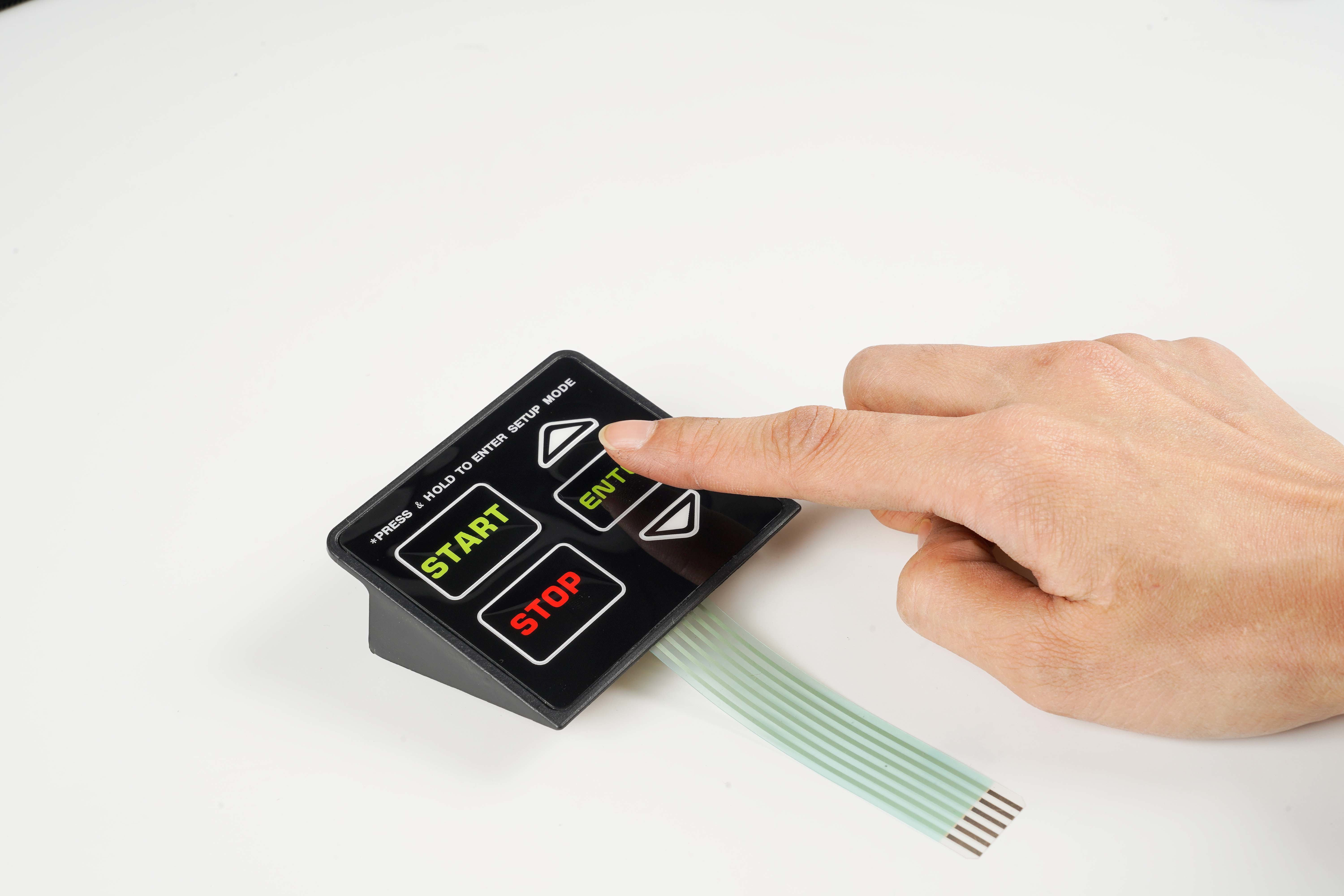Recognizing the Relevance of Membrane Layer Switch in Modern Electronic Devices
Membrane layer buttons are integral parts in contemporary electronic devices. They supply a blend of capability and design that improves individual communication. Their sturdy and light-weight nature makes them suitable for different applications. As industries advance, the need for customization and progressed attributes grows. Comprehending how membrane layer changes add to innovation discloses their value in shaping the future of electronics. What lies ahead for this modern technology?
The Essentials of Membrane Layer Switch Modern Technology
Frequently neglected, membrane layer button modern technology plays an essential function in the contemporary electronics landscape. These gadgets, composed of numerous layers, function as interface for numerous electronic items, ranging from house devices to clinical tools. A normal membrane layer switch includes a graphic overlay, a spacer layer, and a circuit layer, which are carefully assembled to create a practical interface.When stress is applied to the overlay, the circuit layer is completed, enabling signals to be transmitted to the gadget. This technology is known for its convenience, allowing modification in performance, form, and design to fulfill certain individual requirements. Furthermore, membrane buttons are light-weight and slim, making them suitable for applications where area is a premium. Their longevity and resistance to ecological variables further enhance their appeal, ensuring they can withstand severe conditions while maintaining performance. Overall, membrane switch technology is essential to developing efficient and user-friendly digital gadgets

Secret Advantages of Membrane Layer Switches
Membrane switches offer several key benefits that make them a recommended choice in different electronic applications. Their style enables a compact form aspect, allowing manufacturers to produce lightweight and streamlined gadgets. Furthermore, membrane layer buttons are immune to dirt, moisture, and chemicals, which enhances their durability and durability popular settings. The responsive comments given by these switches can boost customer experience, making them very easy and intuitive to operate.Furthermore, membrane switches can be personalized with diverse graphics and colors, enabling unique branding possibilities. The production process is generally economical, especially for high-volume manufacturing, as it minimizes setting up time and simplifies style. Lastly, membrane switches call for very little upkeep, adding to reduced overall functional prices. These advantages emphasize their growing popularity in modern-day electronic devices, where integrity and easy to use interfaces are important.

Applications Throughout Different Industries
The convenience of membrane layer switches enables their extensive fostering across numerous sectors. In the clinical area, they are frequently made use of in diagnostic devices and patient monitoring systems, supplying a durable interface immune to contaminants. The auto industry utilizes membrane layer buttons for dashboard controls, boosting customer experience with streamlined layouts that hold up against extreme conditions. In consumer electronic devices, they work as control panels for gadgets such as microwaves and coffee machine, supplying an user-friendly interface that is easy to clean. The aerospace field uses membrane layer switches in cockpit controls, where dependability and area performance are critical. Additionally, the commercial sector leverages these switches in equipment and control systems to assure robust procedure in requiring atmospheres. This wide variety of applications highlights the versatility of membrane buttons, making them integral elements in enhancing capability and user communication across diverse technological landscapes.
Modification and Style Adaptability

Future Trends in Membrane Switch Development
Arising trends in membrane layer switch advancement indicate a growing emphasis on enhanced capability and integration with clever innovations. As consumer demand for more sophisticated electronic gadgets boosts, manufacturers are concentrating on developing membrane layer switches that not just offer basic functional duties however also include attributes like touch sensitivity, backlighting, and haptic feedback.Furthermore, advancements in products are expected to enhance toughness and ecological resistance, making membrane layer switches over suitable for diverse applications in sectors such as medical care, auto, and consumer electronics. The assimilation of capacitive touch technology is most likely to become a lot more widespread, permitting sleeker designs and boosted customer interfaces. membrane switch.Additionally, the surge of the Web of Things (IoT) is prompting the advancement of membrane layer changes that can interact wirelessly with various other gadgets, read review enhancing interconnectivity. In general, the future of membrane switch innovation appears promising, driven by advancement and the pursuit of user-friendly options
Regularly Asked Questions
Just How Do Membrane Layer Switches Compare to Standard Mechanical Buttons?
Membrane switches, being extra space-efficient and using a streamlined style, comparison with traditional mechanical buttons that provide responsive comments. The former usually feature customizable graphics, while the last commonly assure sturdiness and integrity in numerous applications.
What Products Are Generally Used in Membrane Change Manufacturing?
Membrane layer buttons are normally generated utilizing materials such as polyester, polycarbonate, and printed conductive inks. These products supply longevity, responsiveness, and adaptability, making them suitable for numerous applications in digital gadgets and individual interfaces.
Can Membrane Layer Switches Be Fixed or Recycled?
Membrane buttons can often be fixed, particularly if small issues occur, such as sticky failure or surface damage. Nonetheless, total reuse is usually restricted as a result of put on and potential destruction of materials with time.
Just How Do Ecological Factors Influence Membrane Switch Over Performance?
Ecological variables, such as direct exposure, humidity, and temperature to chemicals, significantly affect membrane layer button efficiency. Extreme conditions can cause destruction, influencing responsiveness and durability, ultimately jeopardizing the functionality of the tool in different applications.
What Is the Typical Lifespan of a Membrane Layer Change?
The common life-span of a membrane button normally ranges from 1 to 5 million actuations, relying on factors such as usage frequency, environmental conditions, and the products made use of in manufacturing, impacting toughness and efficiency longevity. A regular membrane button consists go to the website of a visuals overlay, a spacer layer, and a circuit layer, which are thoroughly constructed to create a useful interface - membrane switch.When pressure is used to the overlay, the circuit layer is completed, enabling signals to be transmitted to the tool. The tactile responses offered by these buttons can boost user experience, making them very easy and instinctive to operate.Furthermore, membrane layer buttons can be tailored with diverse graphics and shades, permitting for special branding possibilities. As consumer need for extra advanced electronic tools rises, makers are focusing on creating membrane layer switches over that not only offer fundamental functional functions however also incorporate features like touch level of sensitivity, backlighting, and haptic feedback.Furthermore, improvements in products are expected to boost resilience and environmental resistance, making membrane layer changes ideal for varied applications in industries such as healthcare, vehicle, and consumer electronics. The combination of capacitive touch innovation is likely to become much more widespread, permitting for sleeker styles and improved individual interfaces.Additionally, the surge of the Web of Things (IoT) is triggering the development of membrane changes that can connect wirelessly with various other gadgets, boosting interconnectivity. Membrane layer switches, being a lot more click this site space-efficient and using a smooth layout, comparison with traditional mechanical buttons that offer responsive responses